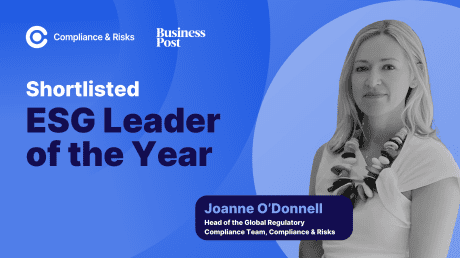
Highlights of the 2nd Cal/OSHA and California Employment Law Summit

This blog was originally posted on 22nd October, 2024. Further regulatory developments may have occurred after publication. To keep up-to-date with the latest compliance news, sign up to our newsletter.
AUTHORED BY CORINE LAURIJSEN, SENIOR REGULATORY COMPLIANCE SPECIALIST, COMPLIANCE & RISKS
Cal/OSHA and Employment Law Summit
The second Annual Cal/OSHA and California Employment Law Summit, held on 8 October 2024 in Berkeley (CA), was organized by law firm Conn Maciel Carey (CMC), a boutique law firm focused on Workplace Safety and Labor and Employment Law.
Highlights regarding new and proposed law and regulations are summarized in the sections below.
New and Proposed Cal/OSHA Statutes and Regulations
Workplace Violence Prevention – SB 553 Enacted (2023)
All employers were required to establish a Workplace Violence Prevention Plan (WVPP) by 1 July 2024.
Workplace Violence is any act of unlawful violence or a credible threat of violence that occurs in the workplace, including a threat or use of physical force that involves injury, psychological trauma or stress, or threat or use of a firearm or other dangerous weapon.
Workplaces exempt of SB 553 are, among others:
- Facilities covered by and that comply with Cal/OSHA’s Violence Prevention in Health Care regulations;
- Teleworking employees;
- Workplaces not publicly accessible, with less than 10 employees present at once, that follow the Injury and Illness Prevention Program (IIPP) regulations.
Based on SB 553, employers should establish, implement, and maintain:
- Effective written workplace violence prevention plan;
- Workplace violence hazard identification (inspections), evaluation, and correction;
- Violent incident log and investigation;
- Training;
- Recordkeeping.
Since 2017, Cal/OSHA has been working on a discussion draft of regulations for Workplace Violence Prevention in General Industry. On July 15, 2024, a revised draft was proposed, including changes based on SB 553, that the California Occupational Safety and Health Standards Board (OSHSB) needs to adopt no later than 31 December 2026.
Naloxone Hydrochloride in First Aid Kits – AB 1976 Enacted
AB 1976 was enacted on September 27, 2024 and will take effect January 1, 2025. It requires:
- Cal/OSHA, before December 1, 2027, to submit a draft rulemaking proposal to revise regulations on first aid materials and emergency medical services to require first aid materials in a workplace to include naloxone hydrochloride or another opioid antagonist approved by the FDA to reverse opioid overdose and instructions for using the opioid antagonist.
- Cal/OSHA, in drafting the rulemaking proposal, to consider, and provide guidance to employers on, proper storage of the opioid antagonist in accordance with the manufacturer’s instructions.
- The OSHSB to consider for adoption revised standards for the standards described above on or before December 1, 2028.
An individual who administers naloxone hydrochloride or another opioid antagonist approved by the FDA to reverse opioid overdose in a suspected opioid overdose emergency shall not be liable for civil damages.
New Indoor Heat Illness Regulations
On June 20, 2024, the OSHSB approved Indoor Heat Illness Prevention Regulations (8 CCR 3396). The regulations entered into force on July 23, 2024, without a grace period. The regulations do not apply to workplaces like, among others, incidental heat exposures where a worker is exposed to temperatures at or above 82°F and below 95°F for less than 15 minutes in any 60-minute period, and teleworking.
For indoor workplaces where the temperature reaches 82 degrees Fahrenheit, employers must take measures to protect workers from heat illness. Some of the requirements include providing drinking water, cool-down rest periods, cool-down areas, acclimatization, and training.
Additional requirements, where feasible, apply where the temperature reaches 87 degrees such as cooling down the work area, implementing work-rest schedules, and providing personal heat-protective equipment. Where workers wear clothing that restricts heat removal or work in high radiant heat areas, the additional requirements apply at 82 degrees.
The measures required may be integrated into the employer’s written Injury and Illness Prevention Program required by section 3203, the employer’s written Heat Illness Prevention Plan required by subsection 3395(i), or maintained in a separate Indoor Heat Illness Prevention Plan (IHIPP).
Updated Lead Regulations
On April 8, 2024, the OSHSB approved updates to the lead standards for construction and general industry based on new understanding of lead health hazards. The upgrades will take effect January 1, 2025.
The changes are designed to maintain employee blood lead levels (BLLs) below 10 μg/dl, a four times lower level than in the existing regulations.
In 8 CCR 5155:
- Permissible Exposure Limit (PEL) for lead (metallic) and inorganic compounds, dust and fume, as Pb (lead), calculated as an 8-hour Time-Weighted Average (TWA), will lower from 0.05 milligrams of lead per cubic meter of air (0.05 mg/m3) to 0.01 mg/m3.
- PEL for lead chromate, as Pb (lead), will lower from 0.02 mg/m3 to 0.01 mg/m3.
In 8 CCR 5198, among others:
- Action level (AL), which triggers certain requirements, will lower from 30 μg/m3 as an 8-hour TWA to 2 μg/m3 as an 8-hour TWA;
- PEL for lead, calculated as an 8-hour TWA, from 50 μg/m3 to 10 μg/m3;
- Respiratory protection, protective clothing and equipment, medical surveillance, training, and warning signs for lead, will be required when employees perform presumed hazardous lead work (PHLW);
- A separate engineering control air limit (SECAL) will be established for particular processes in the manufacturing and recycling of lead acid batteries;
- General hygiene requirements will be established when employees have occupational exposure to lead, rather than exposure to lead above the PEL;
- The duration of specified work that triggers the requirement to implement medical surveillance for employees will be reduced.
Each employer shall establish and implement a written compliance program to reduce exposures to or below the PEL or, where applicable, the SECAL, solely via engineering and work practice controls.
Enterprise-Wide and Egregious Violations Rulemaking
In July 2024, Cal/OSHA started an enterprise-wide and egregious violations rulemaking to implement changes to Labor Code sections 6317 and 6317.8 that require the Division of Occupational Safety and Health (Division) to issue citations for “Enterprise-wide” and “Egregious” violations. Regulatory action is necessary to incorporate these classifications into the existing framework for citation classification and penalty calculation, and to provide definitions and procedures that will allow employers to follow the statutes’ requirements.
The draft regulations contain amendments to Title 8 of the California Code of Regulations, Sections 332.4, 334, 335, and 336, which include posting requirements, classifications of violations, and penalties, by adding enterprise-wide and egregious violations.
Deadline for comments on the draft regulations was October 3, 2024. Cal/OSHA has indicated that it will issue a revised draft after reviewing all comments submitted.
Labor and Employment Law Update
Private Attorneys General Act (PAGA) Amendments – AB 2288 and SB 92 Enacted
On July 1, 2024, AB 2288 and SB 92, which amended the Private Attorneys General Act (PAGA) were signed into law. PAGA allows aggrieved employees to bring a civil action (on behalf of themselves and other current or former employees) to enforce any Labor Code provision that would otherwise be enforced by the state through a civil penalty.
AB 2288 limits a PAGA civil action to employees aggrieved by a violation of the same provision, reduces the fine if certain mitigating factors apply, and eliminates a higher fine for subsequent violations in favor of a higher fine if certain aggravating factors apply.
SB 92 establishes a procedure for small employers to cure alleged violations beginning October 1, 2024. It also allows large employers to request an early evaluation conference and a stay of court proceedings to resolve a PAGA claim.
The amendments entered into force upon enactment, and generally apply to civil actions brought on or after June 19, 2024.
Workers’ Comp Notice – AB 1870 Enacted
AB 1870 requires the workers’ compensation notice, posted in a conspicuous location frequented by employees and easily read by employees during the hours of the workday, to include information concerning an injured employee’s ability to consult a licensed attorney to advise them of their rights under workers’ compensations laws.
Paid Family Leave – AB 2123 Enacted
Under AB 2123, employers will no longer be allowed to require employees to exhaust up to two weeks of accrued vacation before receiving paid family leave (PFL) benefits.
Whistleblower Law Posting – AB 2299 Enacted
California law requires employers to post a list of employee’s rights and responsibilities under existing whistleblower law. AB 2299 requires the Labor Commissioner to develop a model posting which would be deemed to follow posting requirements.
Victims of Violence Leave – AB 2499 Enacted
AB 2499 expands and moves the jury, court, and victim time off provisions for employees from the Labor Code to the California Fair Employment and Housing Act and, thus, within the enforcement authority of the Civil Rights Department.
The Act refers to a “qualifying act of violence,” instead of crime, or crime or abuse. The Act substantially revises existing definitions for its purposes, including defining “victim” as an individual against whom a qualifying act of violence is committed.
An employer with 25 or more employees is prohibited from discharging or in any manner discriminating or retaliating against an employee who is a victim or who has a family member who is a victim for taking time off work relating to a qualifying act of violence.
The eligibility for reasonable accommodations is expanded to include an employee who is a victim or whose family member is a victim of a qualifying act of violence for the safety of the employee while at work, and an employer is required to inform each employee of their rights, to be provided to new employees upon hire, to all employees annually, at any time upon request, and any time an employee informs an employer that the employee or the employee’s family member is a victim. The department is required to develop and post, on or before July 1, 2025, a form that an employer may use to follow that requirement.
Social Compliance Audit – AB 3234 Enacted
This Act imposes more transparency requirements for employers that audit their social compliance practices. Any employer that has voluntarily subjected its business to a “social compliance audit” meaning “inspection of any production, house, factory, farm, or packing facility” to determine in whole or in part if it complies with social and ethical responsibilities, health and safety regulations, and labor laws, including those regarding child labor, must post a link on its website to a report detailing the findings of the audit. In addition to the employer’s findings related to child labor practices and exposure to hazardous or unsafe workplace situations, the audit report must also include certain information such as details of when the audit was conducted, a copy of the employer’s policies, and a statement by the auditing company.
Freedom from Employer Intimidation – SB 399 Enacted
SB 399 adds the “California Worker Freedom from Employer Intimidation Act” to the Labor Code. It prohibits an employer from subjecting, or threatening to subject, an employee to discharge, discrimination, retaliation, or any other adverse action because the employee declines to attend an employer-sponsored meeting or affirmatively declines to participate in, receive, or listen to any communications with the employer or its agents or representatives, the purpose of which is to communicate the employer’s opinion about religious or political matters and would require an employee who refuses to attend a meeting to continue to be paid. The Act imposes a civil penalty of $500 on an employer who violates these provisions, and authorizes the Labor Commissioner to enforce the bill’s provisions.
Driver’s License Discrimination – SB 1100 Enacted
SB 1100 makes it an unlawful employment practice for an employer to include a statement in various employment materials that an applicant must have a driver’s license unless the employer reasonably expects the duties of the position to require driving and the employer reasonably believes that satisfying that job function using an alternative form of transportation would not be comparable in travel time or cost to the employer.
Discrimination Claims – SB 1137 Enacted
SB 1137 provides clarification that the Unruh Civil Rights Act, the Education Code, and the California Fair Employment and Housing Act (FEHA) prohibit discrimination not only on the basis of individual protected characteristics, but also on any combination of protected characteristics.
The Acts mentioned above (excl. the PAGA amendments) will take effect January 1, 2025.
Conclusion
This blog gives an overview of the major changes in California Workplace Safety and Labor and Employment laws and regulations in 2024 that were discussed at the second Annual Cal/OSHA and California Employment Law Summit held on 8 October 2024. Some, like the Indoor Heat Illness Regulations and PAGA changes, took effect right away. Others, like the new Acts, will take effect January 1, 2025.
The Department of Industrial Relations (DIR), through the Labor Commissioner’s Office and Cal/OSHA, is responsible for workplace inspections. Their activity and staff might grow in the coming years. Taking proactive measures to ensure compliance with new and existing laws and regulations will avoid potential enforcement actions and citations.
Stay On Top Of Your Changing Regulatory Obligations
Tell us your compliance challenges and we will find the solution that’s right for you.


